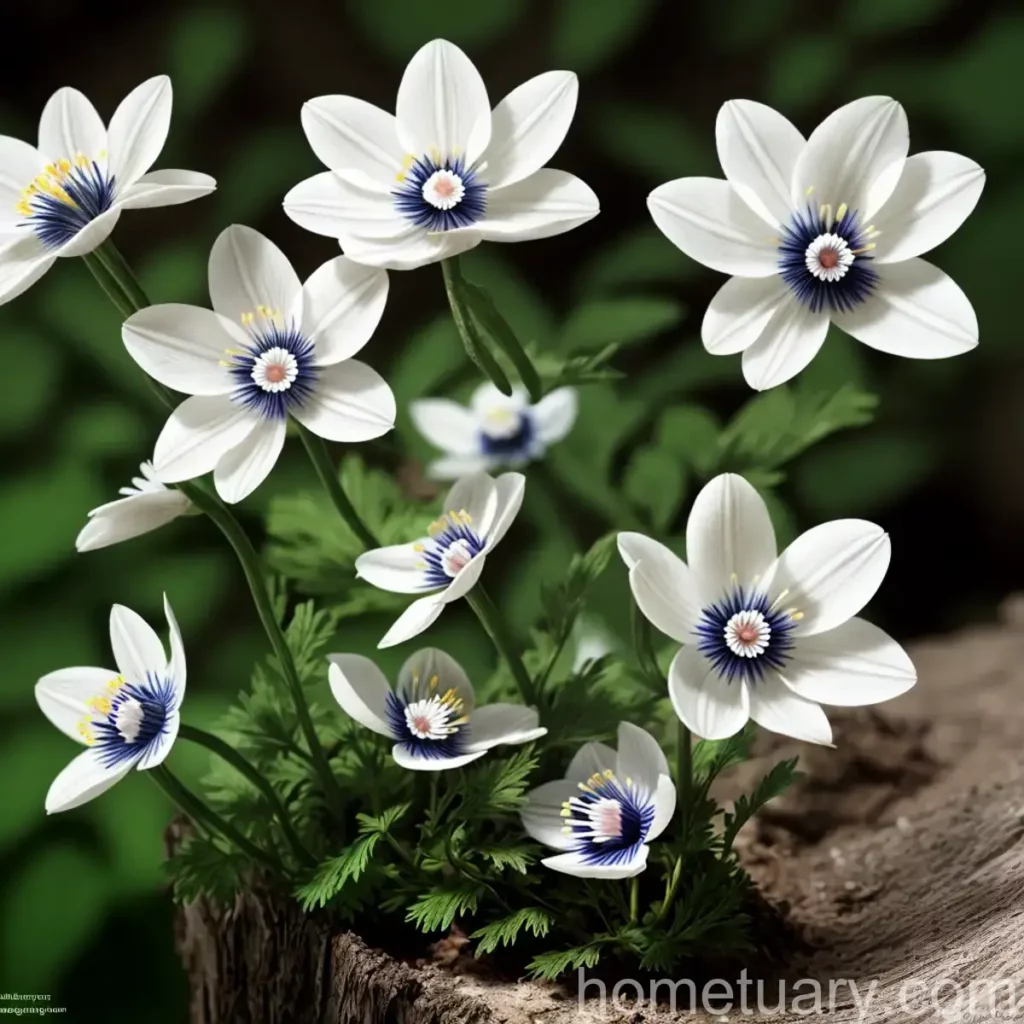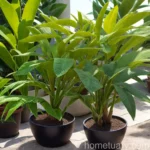Wood Anemone (Anemone nemorosa): A Complete Plant Care Guide
As plant scientists, we often come across fascinating species that deserve attention and care. Wood anemone (Anemone nemorosa) is one such beautiful plant that captivates the hearts of nature enthusiasts and gardeners alike. In this comprehensive guide, we will delve into all facets of wood anemone, from its cultural significance to its growth requirements and ecological role.
What is Wood Anemone (Anemone nemorosa)?
Wood anemone, scientifically known as Anemone nemorosa, is a delicate perennial plant belonging to the buttercup family (Ranunculaceae). This enchanting plant is native to Europe, where it thrives in woodlands, meadows, and alongside hedgerows. Known for its dainty, star-shaped flowers and deeply lobed leaves, wood anemone adds a touch of elegance to its natural habitats.
Plant Characteristics
- Scientific Name: Anemone nemorosa
- Family: Ranunculaceae
- Habit: Perennial
- Native Habitat: Woodlands, meadows
- Flower Structure: Star-shaped
- Foliage: Deeply lobed leaves
- Growth Habit: Spreading via rhizomes
Key Takeaways – Wood Anemone (Anemone nemorosa)
Before we delve into the finer details of wood anemone care, let’s highlight the essential takeaways about this captivating plant.
- Growth Habit: Wood anemone is a spreading perennial plant that reproduces via rhizomes.
- Flowering Time: This plant blooms in spring, adorning woodlands with its delicate white or pink flowers.
- Cultural Significance: Wood anemone holds historical and ecological significance, often associated with folklore and wildlife habitat restoration.
- Growing Conditions: It thrives in shady woodlands with moist, well-drained soil, making it an ideal choice for naturalistic landscapes and rain gardens.
Now that we have grasped an overview of wood anemone, let’s explore the detailed care requirements for this delightful plant.
Culture
Wood anemone is not just a plant; it is a symbol of purity and tranquility. Cultivating this species involves understanding its specific environmental and care needs to ensure its healthy growth and blooming success.
Uses
Wood anemone serves various cultural, ecological, and medicinal purposes, making it a multifaceted plant that contributes to the ecosystem and human well-being.
- Cultural Significance: In folklore, wood anemone symbolizes anticipation and is associated with ancient mythological stories.
- Wildlife Habitat Restoration: It plays a crucial role in restoring wildlife habitats by providing food and shelter for various woodland creatures.
- Medicinal Properties: Traditionally, wood anemone has been used to treat ailments, harnessing its natural healing properties.
Growing Conditions
Understanding the specific growth requirements of wood anemone is essential for successfully nurturing this delicate plant.
Water
Wood anemone thrives in moist soil conditions. While it appreciates consistent moisture, it also requires well-drained soil to prevent waterlogging. During dry spells, supplemental watering may be necessary to maintain adequate soil moisture.
Sunlight
As a woodland species, wood anemone prefers dappled or partial shade. It thrives under the canopy of trees or in areas with filtered sunlight, mimicking its natural habitat.
Soil
The soil requirements of wood anemone are critical to its well-being. It prefers rich, humus-laden soil with good drainage. A slightly acidic to neutral pH (6.0-7.0) is ideal for optimal growth.
Fertilizer
Due to its adaptation to woodland conditions, wood anemone generally does not require additional fertilization. However, if the soil lacks organic matter, a light application of balanced, organic fertilizer before the growing season can be beneficial.
Pruning
Wood anemone generally does not require extensive pruning. However, removing dead foliage and spent flowers after the blooming period can enhance the plant’s appearance and prevent disease spread.
Propagation
The propagation of wood anemone can be achieved through several methods, including division and seed sowing.
- Division: During the plant’s dormant season, rhizome division can be employed to propagate wood anemone. This method allows the clumps to be divided into smaller sections, each containing viable buds, which can then be replanted in suitable locations.
- Seed Sowing: Collecting and sowing seeds from mature wood anemone plants can also be an effective propagation method, though it may take longer for the plants to reach maturity compared to division.
Container Popularity
While wood anemone is primarily known for its naturalistic woodland settings, it can also be grown in containers, enriching gardens and outdoor living spaces with its ethereal beauty.
Container Gardening
When growing wood anemone in containers, it’s essential to recreate its native woodland conditions as closely as possible. Select a spacious container with good drainage, fill it with a well-draining, humus-rich potting mix, and position it in a shaded or partially shaded area that replicates the plant’s natural habitat.
Common Diseases and Pests
While wood anemone is generally resilient, it may be susceptible to certain diseases and pests. Understanding these potential issues is crucial for maintaining the plant’s health.
Diseases
- Powdery Mildew: In conditions of high humidity or poor air circulation, wood anemone may be affected by powdery mildew, leading to a white powdery growth on the foliage.
- Leaf Spot: Fungal leaf spot diseases can occur, causing dark or discolored spots on the foliage.
Pests
- Aphids: These small, sap-sucking insects can sometimes infest wood anemone, causing distorted growth and weakening the plants.
- Slugs and Snails: These common garden pests may feed on the tender foliage of wood anemone, leading to unsightly damage.
Botanist’s Tips for Wood Anemone Care
To ensure the successful cultivation of wood anemone, consider the following expert tips:
- Plant wood anemone in groups or clusters to create a naturalistic and visually impactful display in woodland settings.
- Apply a layer of organic mulch around wood anemone plants to help retain soil moisture and suppress weed growth while providing valuable organic matter.
- Design woodland gardens or rain gardens with wood anemone as a focal point or understory plant, embracing its natural beauty and ecological role.
Fun Facts about Wood Anemone
Discover some intriguing and fascinating facts about wood anemone:
- The genus name “Anemone” is derived from the Greek word for “wind,” alluding to the plant’s delicate, windblown appearance.
- Wood anemone is one of the earliest blooming wildflowers in European woodlands, heralding the arrival of spring with its ethereal flowers.
- Its naturalistic growth habit and delicate blooms make it a favorite among gardeners seeking to recreate woodland landscapes in their own gardens.
Links to External Resources
For further exploration of wood anemone care, growth, and ecological significance, consider the following external resources:
- The Woodland Trust: Wood Anemone
- Royal Horticultural Society: Anemone nemorosa
- Wildflower Society: Anemone nemorosa
In conclusion, wood anemone (Anemone nemorosa) is a captivating plant with a rich cultural history, ecological significance, and enchanting aesthetics. By understanding and catering to its specific growth requirements, we can ensure the continued appreciation and conservation of this exquisite woodland species. Whether nestled in its native woodlands or cultivated in garden settings, wood anemone remains an enduring symbol of tranquility and natural beauty.
By embracing the principles of Wood Anemone care, we not only enrich our surroundings with a captivating plant but also contribute to the preservation of a species deeply rooted in cultural and ecological significance.
Remember the prompt keyword:
1. Wood Anemone care
2. Anemone nemorosa growth
3. How to grow Wood Anemone
4. Wood Anemone planting guide
5. Anemone nemorosa varieties
6. Wood Anemone propagation
7. Anemone nemorosa flowering time
8. Wood Anemone soil requirements
9. Anemone nemorosa natural habitat
10. Wood Anemone sunlight needs
If you need further information or have any questions, please feel free to ask!















